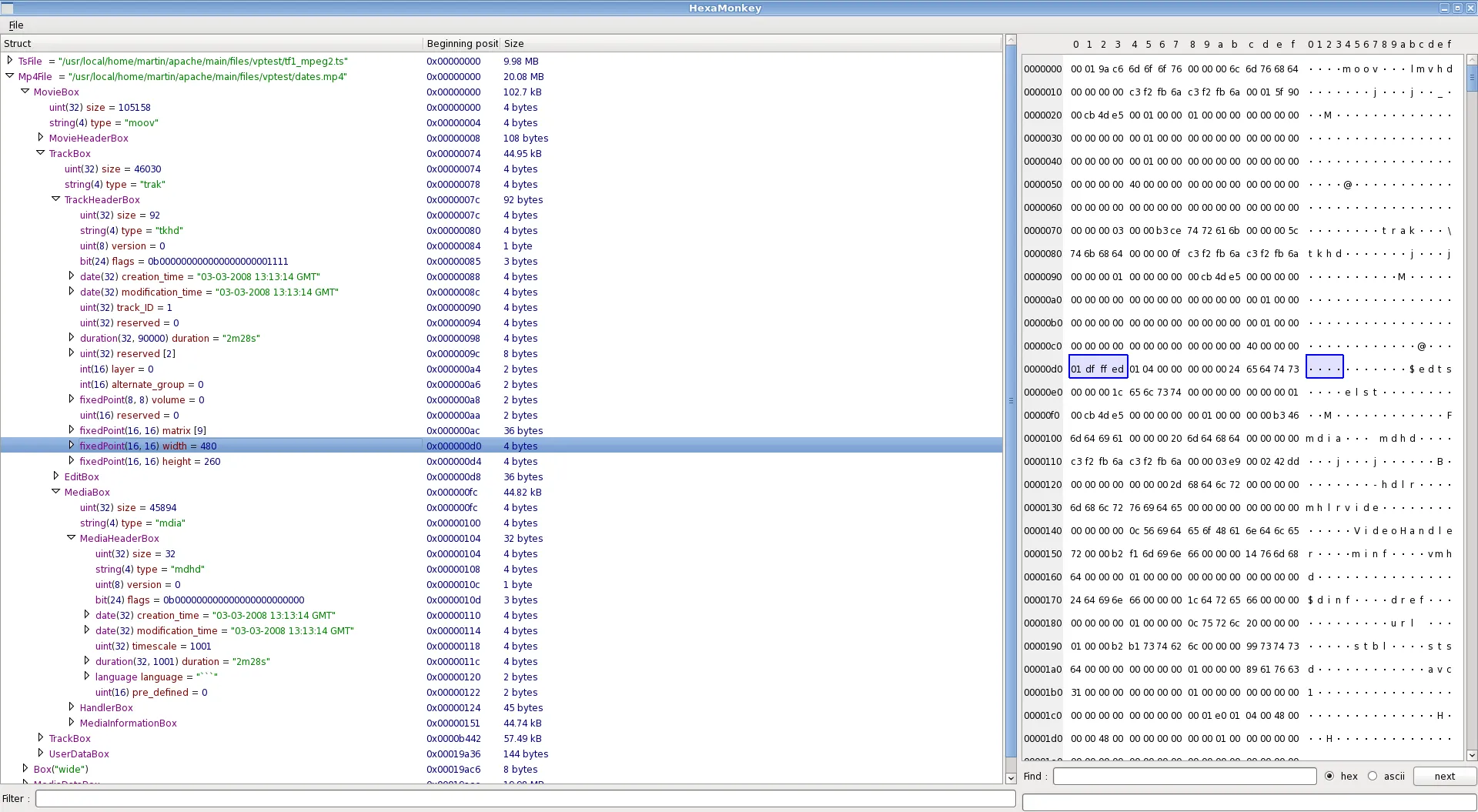· 2 min read
Hexamonkey
My daytime job is to develop video software. I like it but over the years I have been doing the same thing all over again and it is seriously beginning to bug me. Namely:1. Someone comes...

My daytime job is to develop video software. I like it but over the years I have been doing the same thing all over again and it is seriously beginning to bug me. Namely:
- Someone comes with a corrupt or crazy video file saying that ‘it does not work’ ©.
- You take the video file, try to play it and realize it crashes or fails around byte at position 0x4242.
- You fire hexedit and begin scanning the file around 0x4242 to see what is wrong with it.
- If you are lucky, you have a huge pdf explaining the file structure in a window next to hexedit. If you’re not lucky, you have plenty of chrome tabs opened on various RFCs and blog posts.
- You try to understand what the hell the bit #5 in byte at position 16962 means (yes, you have to convert to hex each time, it’s no fun else).
- You repeat step 5. until the file structure is burnt into your brain and you can see what’s wrong.
- You do a 5min fix.
It was 2012, we could stream videos using a single <video> element but I still needed hexedit. Ideally, I wanted something a bit like wireshark but that could work with huge files and not only packetized streams. I submited the idea for a students project at Ecole Centrale Paris and they came up with Hexamonkey.
Hexamonkey
After 2 years of development, Hexamonkey is in a state where it is usable. I especially like the mp4 support for debugging smoothstreaming files. It also supports:
- mpeg4
- mpeg2-ts
- matrovska
- avi
- asf/wmw (incomplete)
- png
- jpeg (incomplete)
- gif
- zip
- sqlite

The file format description is made using a custom-developped langage called ‘hmscript’. It works fairly well for tree-like data like mp4 but has some limitations as of now for packetized formats like mpeg2-ts where data has to be ‘re-assembled’.
Anyway, it’s a pretty nice software. I wanted to thank Sevan, Nicolas, Guillaume and Vincent for their involvment in the project. I hope it can be usefull for others too.
More information
- Hexamonkey website: http://hexamonkey.com
- Github: https://github.com/hexamonkey/hexamonkey
- Google groups: https://groups.google.com/forum/#!forum/hexamonkey
- Slides for Paris-Hackers #10: https://mbonnin.net/hexamonkey-slides/